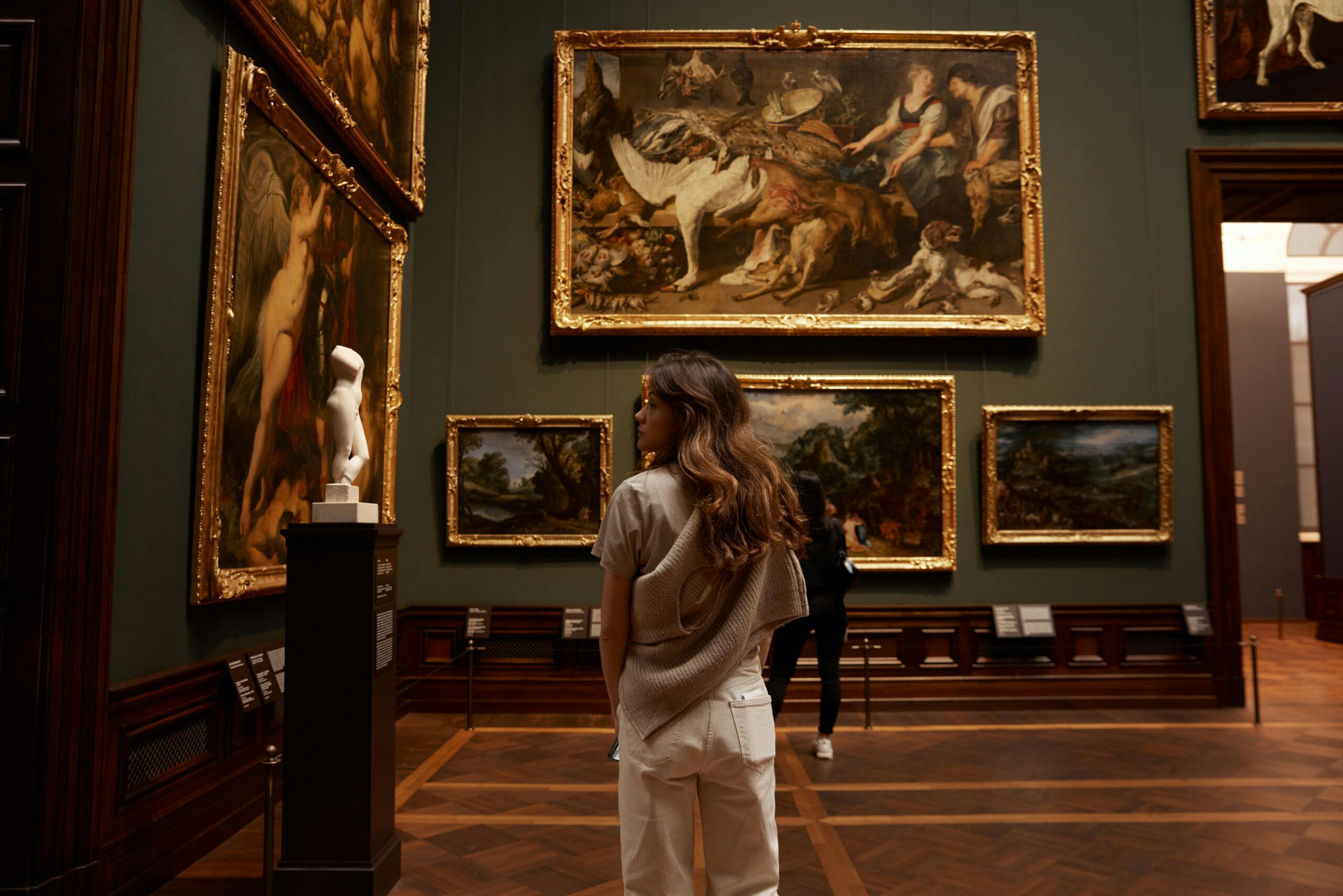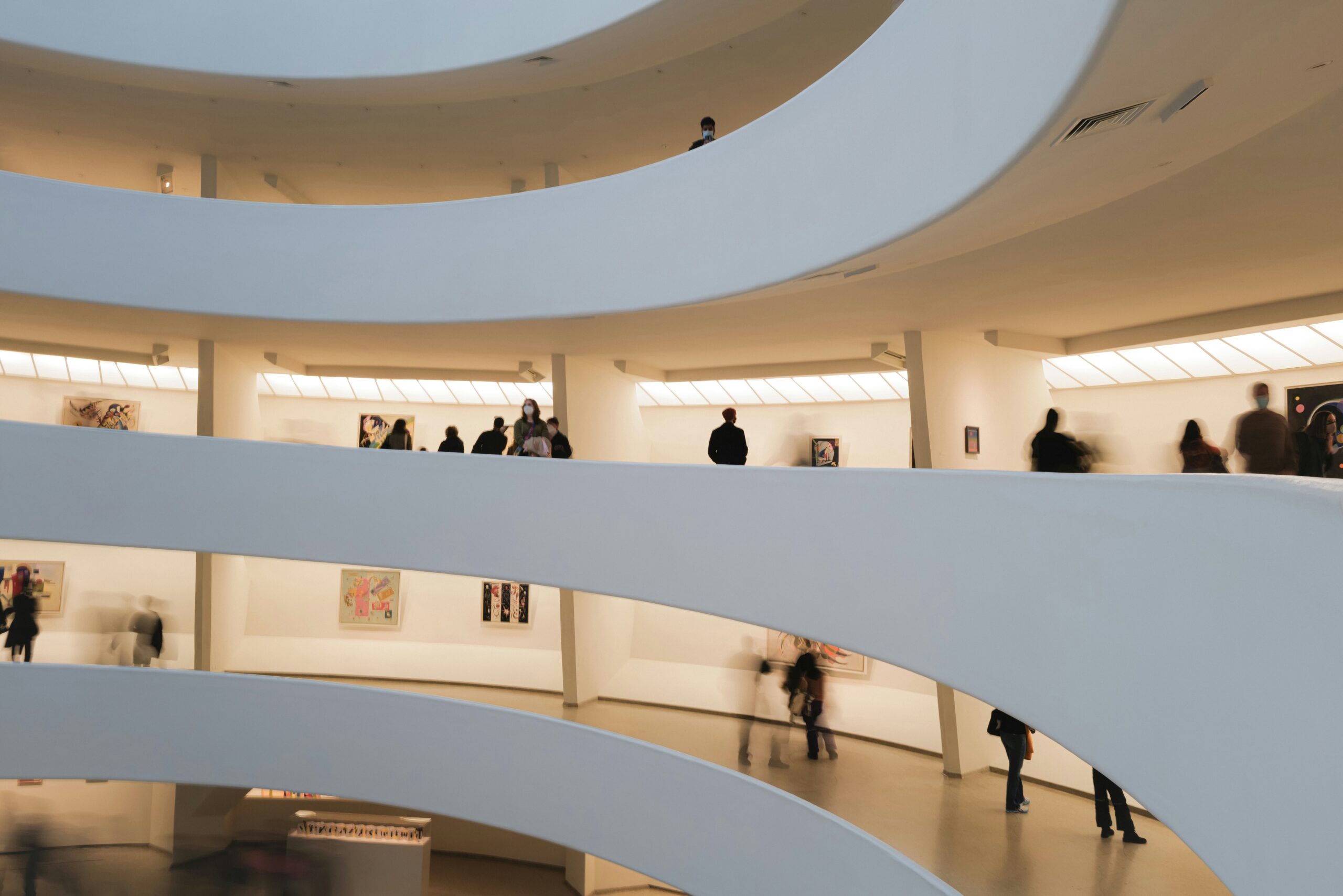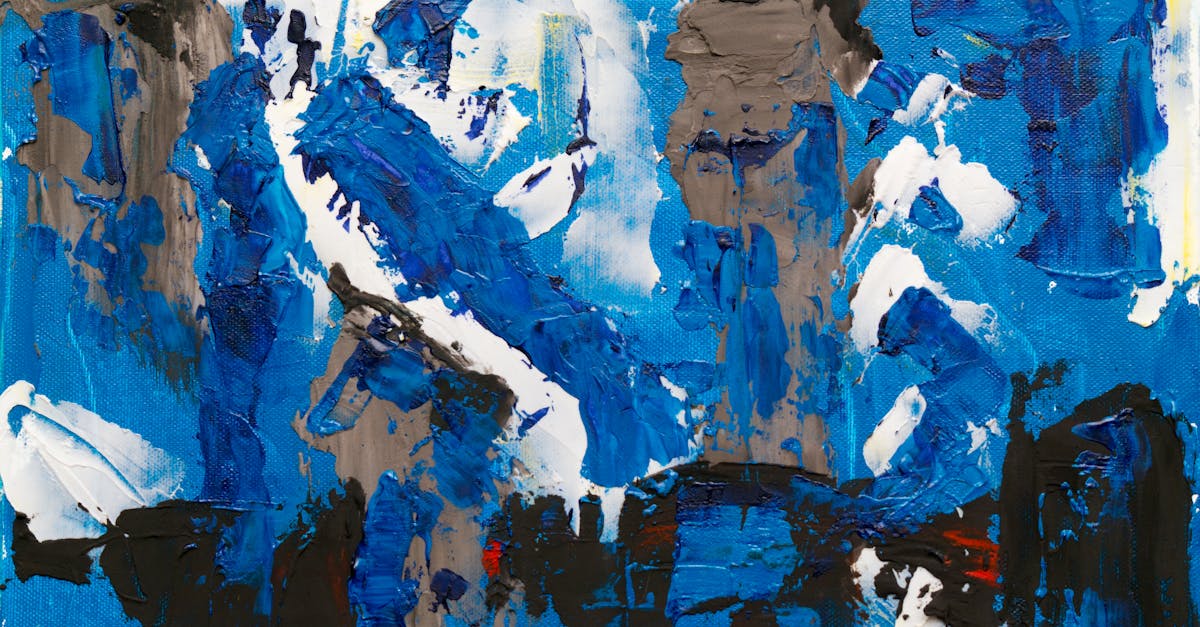How Do Art Galleries Get Paid? Top Revenue Streams and Business Models Explained
When I walk into an art gallery I can’t help but wonder how these beautiful spaces keep their doors open. The world of art feels mysterious and exclusive but there’s a practical side to every masterpiece on display. Behind the scenes galleries work hard to turn creativity into a sustainable business.
Understanding how art galleries get paid can help both artists and collectors navigate this unique industry. Whether it’s through commissions sales or special events each gallery finds its own way to thrive. I’m excited to break down the main ways galleries earn their income and shed some light on how the art world really works.
Overview of Art Gallery Business Models

Art galleries operate with diversified business models that center on revenue generation, artist relationships, and targeted audience engagement. Most galleries use a commission-based approach, taking a percentage of every artwork sold. I find this model most common in both primary and secondary art markets, with industry-standard commissions ranging from 30–50% for pieces by represented artists.
Many galleries supplement traditional sales with curated exhibitions, private previews, and participation in art fairs. These events attract potential collectors, offering access to exclusive works and facilitating direct transactions. I see that art fairs, especially international ones like Art Basel or Frieze, increase exposure and sales opportunities, though they also involve significant upfront costs.
Some galleries use membership programs and sponsorship packages. Memberships provide loyal patrons with early access, discounts, or special programming. Corporate partners and private sponsors contribute through strategic collaborations or branded events, helping galleries remain financially viable and active in the community.
Leasing works to businesses or offering consulting services for corporate or personal art collections has become another important income stream. I notice this approach helps galleries build long-term relationships with corporate clients and increases artwork visibility outside traditional gallery spaces.
Galleries involved with online sales platforms reach broader audiences. Digital sales channels drive interest from buyers worldwide, expanding beyond local foot traffic and traditional client rosters.
| Business Model | Key Revenue Stream | Typical Percentage or Fee | Example Entities |
|---|---|---|---|
| Commission Sales | Artwork sales commission | 30–50% per piece | Gagosian, Pace Gallery |
| Art Fairs and Exhibitions | Ticket sales, booth sales, artwork sales | $5,000–$100,000+ per event | Frieze, Art Basel |
| Membership Programs | Annual fees | $75–$1,000 per member | The Met, MoMA |
| Sponsorship | Corporate/private sponsorship | Variable, often sponsorship tiers | Saatchi Gallery, Tate Modern |
| Leasing/Consulting | Monthly lease fee, consulting fee | 5–10% value of leased art | Corporate Art Services Inc. |
| Digital Platforms | Online sales commission/fees | 10–35% per transaction | Artsy, Artnet |
I integrate these business models to ensure galleries maintain sustainability while supporting artists and cultivating collector relationships.
Commission-Based Revenue Streams
Commission-based revenue streams form a primary financial pillar for most art galleries. I see galleries relying on a percentage share from artwork sales to cover operational costs and support ongoing programming. These streams maintain sustainability while letting both artists and galleries thrive together.
Sales Commissions on Artwork
Sales commissions on artwork give galleries a direct income source tied to successful transactions. I observe galleries negotiating commission rates that typically fall between 30% and 50% of the sale price. For example, a gallery selling a $10,000 painting often retains $3,000 to $5,000. This model incentivizes galleries to market pieces effectively and invest in the visibility of their artists.
| Artwork Sale Price | Typical Commission (30%) | Typical Commission (50%) | Artist Receives (after 50% commission) |
|---|---|---|---|
| $2,000 | $600 | $1,000 | $1,000 |
| $5,000 | $1,500 | $2,500 | $2,500 |
| $10,000 | $3,000 | $5,000 | $5,000 |
| $50,000 | $15,000 | $25,000 | $25,000 |
Galleries set these commissions based on factors like reputation, location, and the artist’s career stage.
Representing Artists and Exclusive Rights
Representing artists and exclusive rights drive deeper gallery-artist partnerships. I notice exclusive representation agreements often grant a gallery unique selling privileges within a region or market segment. These agreements frequently specify commission structures, minimum annual sales targets, and duration.
For example, exclusivity terms might restrict an artist from exhibiting work at other galleries in New York during a contract period, strengthening the gallery’s position as the sole promoter and seller in that area. Galleries leverage these rights to secure investment return, build consistent collector trust, and shape an artist’s career trajectory through curated exposure and targeted sales strategies.
Additional Income Sources for Art Galleries

Art galleries expand beyond commission-based sales and develop diverse income streams to strengthen financial stability. I leverage alternative programs and creative uses of gallery space to attract varied audiences and create new revenue channels.
Art Rentals and Leasing
Art rentals and leasing programs offer flexible access to artworks for corporate offices, hotels, and private collectors. I provide artwork for monthly or annual fees, supplying rotating selections that appeal to businesses seeking dynamic decor or temporary installations.
| Rental Type | Client Example | Fee Structure | Duration | Service Provided |
|---|---|---|---|---|
| Corporate Leasing | Law firms, hotels | Flat monthly fee per piece | 3-12 months | Delivery, hanging |
| Private Rentals | Home staging, events | Variable rate by artwork value | 1 week–6 months | Insurance offered |
These agreements enhance recurring income and build new client relationships while maintaining regular exposure for artists featured.
Hosting Events and Exhibitions
Event hosting transforms the gallery into a sought-after venue for private parties, corporate events, workshops, and fundraisers. I create custom exhibition experiences and generate venue rental fees, which can range from $500 to $5,000 per event, based on location, size, and included amenities.
Special exhibitions—such as artist talks, curated show previews, and collaborative pop-ups with brands—attract additional audiences and encourage ticket sales, sponsorships, or donations. These activities increase foot traffic and foster ongoing interest in both the space and featured artists.
| Event Type | Audience | Revenue Source | Typical Fee/Ticket |
|---|---|---|---|
| Private Corporate Event | Companies, sponsors | Space rental, sponsorship | $1,000–$5,000 |
| Public Workshop | Art lovers | Ticket sales | $25–$100 |
| Fundraising Gala | Patrons, collectors | Donations, auctions | N/A |
Gallery Membership Programs
Gallery membership programs create loyalty and establish steady revenue through annual or monthly dues. I offer members early access to exhibitions, exclusive events, and discounts on artwork or merchandise. Membership tiers, often ranging from $100 to $1,500 per year, provide tailored benefits to individual or corporate patrons and help build a dedicated community.
| Membership Tier | Annual Fee | Key Benefits |
|---|---|---|
| Standard | $100 | Exhibition previews, newsletters |
| Patron | $500 | VIP events, artist meetings |
| Corporate | $1,500 | Event rentals, private tours |
By diversifying these additional income sources, I reinforce gallery sustainability while supporting a broader network of art enthusiasts and collectors.
The Role of Grants and Public Funding
Grants and public funding supply essential support for art galleries’ operational budgets and exhibition programming. I often see non-profit and contemporary galleries apply for local, state, or national arts grants, relying on these funds for staff salaries, educational outreach, and exhibition costs. Federal agencies like the National Endowment for the Arts and local arts councils make recurring contributions to gallery activities when proposals demonstrate community value and artistic merit.
Government grants and cultural funds prioritize programming diversity and public engagement. My experience with awarded grants shows they often require specific project outcomes, public access guarantees, and detailed reporting for continued eligibility. Funding rounds may occur annually or bi-annually, adding regular planning cycles to gallery operations.
Corporate giving and foundation grants supplement public funding, but eligibility and competitive application processes distinguish public grants as a steady source for qualifying galleries. These public funds stabilize cash flow during economic downturns, bridge the gap between sales-based income cycles, and support mission-based programming expansion.
| Public Funding Source | Eligible Gallery Types | Typical Use | Funding Cycle |
|---|---|---|---|
| National Endowment for the Arts | Non-profit, contemporary | Exhibitions, programs | Annual/Biannual |
| State Arts Agencies | Regional, community-based | Operations, outreach | Annual |
| Local Arts Councils | All types, location-based | Events, education | Annual |
| Private Foundations | Thematic, project-driven | Special projects | Varied |
Grant-funded projects frequently highlight community impact and broad accessibility. Through consistent public funding, galleries reinforce their business model, cultivate inclusivity, and strengthen their role as cultural anchors.
Challenges in Art Gallery Profitability

Operating art galleries involves addressing several persistent challenges that influence profitability and sustainability. I identify the main hurdles that affect income consistency, operational costs, and market positioning.
- High Operating Expenses
Monthly rent, insurance, utilities, staff salaries, and security systems represent consistent outflows for most galleries. Premium city locations, such as Chelsea in New York or Mayfair in London, demand higher rents that quickly increase fixed costs.
- Reliance on Irregular Sales
Commission-based sales create unpredictable income. High-value transactions may not occur every month, while market trends influence collector purchasing habits and buying cycles.
- Competitive Market Landscape
Hundreds of galleries compete for both artist representation and collector attention. Top-tier galleries, like Gagosian or Hauser & Wirth, often secure established artists, while smaller galleries invest more to develop emerging talent and maintain relevance.
- Art Fair Participation Costs
Major art fairs, such as Art Basel or Frieze, offer access to broader collector bases but require significant spending. Booth fees, artwork shipping, and travel expenses, exceeding $50,000 per fair for some exhibitors, reduce margins and introduce financial risk.
- Securing Sustainable Funding
Public grants, sponsorships, and membership programs are competitive. Economic downturns shrink arts funding and philanthropic giving, making it harder to balance programming ambitions with available cash flow.
Table: Common Art Gallery Expenses vs. Revenue Streams
| Expense/Revenue Source | Typical Cost/Share (%) | Example Context |
|---|---|---|
| Rent/Utilities | 20-35% of operational budget | High-street urban galleries |
| Staff Salaries | 15-25% of operational budget | Curators, sales, admin |
| Art Fair Participation | $20,000-$100,000+ per event | International art fairs |
| Commission from Sales | 30-50% of artwork sale price | Primary gallery business model |
| Artwork Leasing | $500-$2,500/month per piece | Corporate art rentals |
| Membership Dues | $100-$500/year per person | Patron/collector programs |
| Grants and Sponsorship | Variable, application-based | Public funding, brand partners |
- Fluctuating Art Market Demand
Economic cycles impact collector investment and discretionary spending. During recessions, auction sales and private transactions decline, making income less reliable for galleries that depend heavily on transactional revenue.
- Art Storage and Insurance Risks
Valuable inventory requires climate-controlled storage and comprehensive insurance policies. Damage, theft, or shifts in artist market value can result in substantial unrecoverable losses.
- Need for Digital Adaptation
Online platforms have expanded access but intensified global competition. Adoption demands investment in e-commerce, digital marketing, and enhanced cybersecurity to meet buyer expectations and protect assets.
These profitability challenges require continuous innovation and cost-control strategies for galleries aiming to balance their commercial and cultural missions.
Conclusion
Understanding how art galleries get paid sheds light on the delicate balance between artistic vision and financial reality. I find it fascinating how galleries blend creativity with business sense to keep their doors open and support both artists and collectors.
The evolving landscape of the art world means galleries must stay agile, exploring new revenue streams and building strong relationships. This adaptability helps them thrive even as market demands and funding opportunities shift.
Frequently Asked Questions
How do art galleries make money?
Art galleries primarily make money through commission-based sales, taking a percentage (usually 30-50%) from each artwork sold. They also generate income from curated exhibitions, private previews, art fairs, rental programs, event hosting, membership fees, grants, public funding, and online sales platforms.
What is a typical commission rate for art galleries?
The typical commission rate for art galleries ranges from 30% to 50% of the artwork’s sale price. The exact rate is usually negotiated between the gallery and the artist, often formalized in a representation agreement.
Why are commission-based sales important for galleries?
Commission-based sales are the main financial foundation for most galleries, enabling them to cover operational expenses and invest in artists and programming. They also incentivize galleries to actively market artists’ work.
What other revenue streams do galleries use besides art sales?
Other revenue streams for galleries include art rentals, event hosting, membership programs, consulting services, corporate sponsorships, and applying for grants and public funding. Online sales have also become increasingly important.
How do galleries support and promote artists?
Galleries support artists by offering representation agreements, providing curated exposure, marketing their work, and creating targeted sales opportunities. These partnerships strengthen artists’ careers and help build trusted relationships with collectors.
Why do art galleries host events and exhibitions?
Art galleries host events and exhibitions to increase artwork exposure, attract new collectors, generate event rental fees, build community engagement, and diversify their income beyond regular sales.
How do grants and public funding help art galleries?
Grants and public funding help galleries cover operational costs, fund exhibitions and outreach programs, and stabilize cash flow during economic downturns. These funds often come from government arts agencies and require demonstration of community value.
What challenges do art galleries face in staying profitable?
Art galleries face challenges like high operating costs, unpredictable sales, stiff competition, expensive art fair participation, fluctuating demand, and the need to adapt digitally. These factors make long-term financial sustainability complex.
How have online sales changed the art gallery business?
Online sales platforms allow galleries to reach global audiences, expand their market beyond locals, and create new revenue opportunities. They also require galleries to adapt marketing strategies and embrace digital tools.
